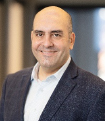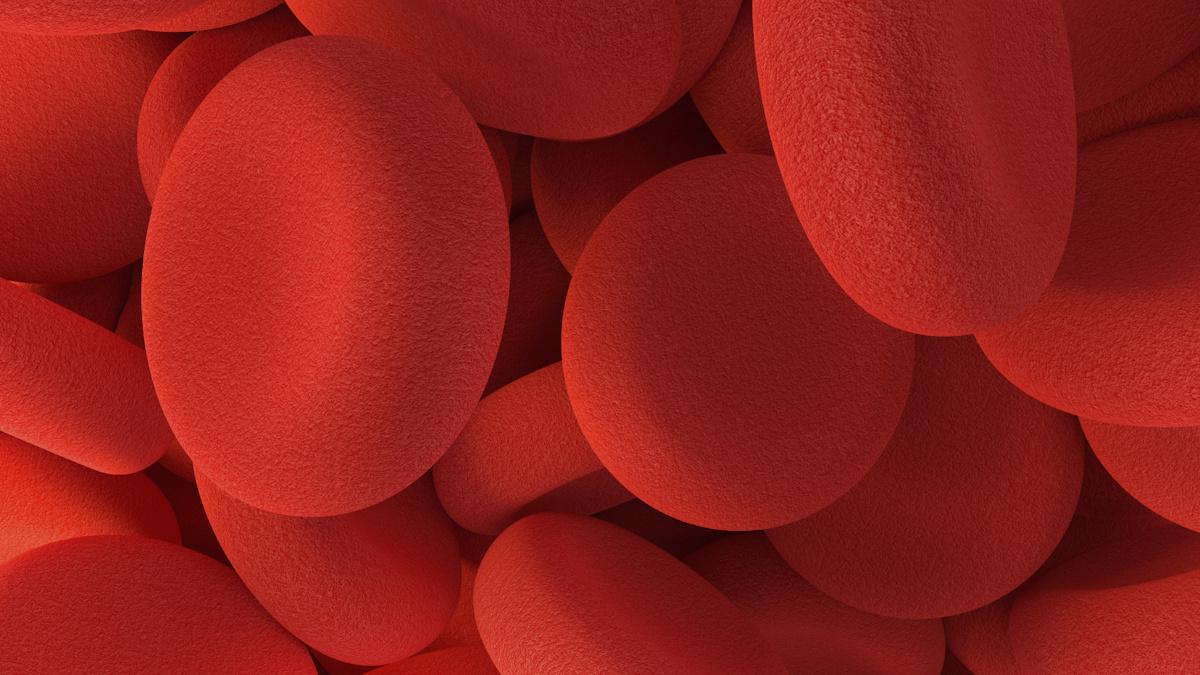Digital investment promises to accelerate the use of wearable sensor data in clinical trials

In an interview with Dudley Tabakin (CEO, VivoSense), Chris Garabedian (CEO, Xontogeny) and Tanja Dowe (CEO, Debiopharm Innovation Fund), pharmaphorum discusses the recent announcement of the closing of a $25 million Series A financing round to scale up the innovative VivoSense® software, which uses wearable sensor data in clinical trials, and for the development of novel digital biomarkers.
Dudley Tabakin, CEO of VivoSense, describes how this financing is set to accelerate the development of novel digital biomarkers and improve digital clinical outcome assessments.
He explains that VivoSense® software is designed to deliver real-world evidence from wearable sensors, which will help to advance patient-focused drug development and precision medicine for patients with cancer, Alzheimer’s, rare disease and other therapeutic indications.
“VivoSense software is developed specifically for analysis of data from wearable sensors”, explains Tabakin.
“The problem with most wearable sensor data is that it tends to be variable and ‘noisy’. You’re wearing it on your body while walking around doing day-to-day activities. The VivoSense platform is developed specifically to be able to handle that type of variability.”
Tabakin goes on to highlight how output measures are therefore more relevant, accurate and meaningful to the patient, clinician and – in the case of regulatory approvals – the pharmaceutical sponsor.
“ECGs are a great example of this,” Tabakin continues. “You need the purest waveform to measure heart rate accurately, but when you’re moving around, a wrist-worn device may integrate a lot of ‘noise’ in the data. With most devices, that data is interpreted, and an estimate is made for the period where the true data cannot be read (the ‘noise’). In VivoSense software, we have the ability to find those regions and remove that period of time. In this way, you’re eliminating that variability.”
Searching for the right solution
Chris Garabedian, CEO of Xontogeny, describes how his past experiences as CEO of Sarepta Therapeutics have led him on an exploration for technology that can effectively leverage wearable data in clinical trials.
“The wearable market was starting to proliferate, and people were starting to ask questions. How can this data be incorporated into clinical trials?”
He explains that there existed an unmet need to bolster the data sets for drug development. There was a huge opportunity for regulators to leverage real-world evidence and patient-reported outcomes data, captured through wearables, in addition to traditional clinical data.
“But the field was still pretty nascent at that point. I was left frustrated that there wasn’t the type of solutions that I was looking for. This brings us to VivoSense. We believe that VivoSense is ‘the tip of the spear’ in this category.”
Garabedian and his team plan to support VivoSense, not just with their funding package but with their industry network and connectivity.
“We were really searching for the right investment in this emerging digital space. We’ve always been intrigued by wearables, but there just haven’t been a lot that have measured up. We think wearables that use these types of technologies will have an edge and be differentiated from those that use existing platforms in future clinical trials.”
Tabakin agrees. “In 2010, when we founded VivoSense, we developed a software platform for analysis of wearable sensor data and electronic patient-recorded outcomes (PRO) and patient diary information. But as Chris says, back then, it was really early days. There were very few CEOs out there that, like Chris, were looking for this type of solution.”
Tabakin explains that he now sees a big change, especially since the COVID-19 pandemic. Pharmaceutical sponsors are actively looking for solutions. With their team’s collective experience in the field, Tabakin and his investors believe VivoSense is best positioned to provide these solutions.
Tanja Dowe, CEO of Debiopharm Innovation Fund, describes how Debiopharm had invested in a number of digital therapeutics companies in the oncology sphere prior to the partnership with VivoSense. They had already perceived the next step to be collecting passive data through wearables, in order to better serve patient outcomes, whether in cancer or in other indications.
“When we came across VivoSense, we immediately knew that this was the company that we had been looking for”, explains Dowe.
“The team has that entrepreneurial background, a long history of technical competency and knowledge in wearables, and they had the same vision as us about how patients can be passively monitored.”
The inherent value of passive data collection
Tabakin is keen to explain how passive data collection has many benefits for outcome measurement. Data can be collected by patients at home, in the real world, enabling the pharmaceutical industry to tap into digitally connected devices, which is something regulatory authorities have been asking for, he says. He even goes so far as to ponder whether in-clinic trials are, in fact, subjective, where real-world evidence is the more objective form.
“Regulatory authorities are asking for real-world evidence as opposed to in-clinic data, which we know has bias. That is why you want to measure passively as much as possible and why VivoSense was really created in the first place.
Take the six-minute walk test for movement disorders. In the clinic, the patient is motivated to walk as far as they can in six minutes, whereas in the real world, you can get data that shows the patient’s true everyday walking activity. Nobody is motivating them to go on a six-minute walk.
Especially with the proliferation of (and need for) de-centralised trials, with pandemics, it’s even more important to collect this passive data, as part of a clinical trial.”
Exploring the wider impact on digital healthcare
Garabedian and Dowe both feel that this type of software is of critical importance for the wider life sciences industry. They believe the field will grow rapidly over the next few years.
"In the longer run, the largest opportunity for improvement is in standard patient follow up,” Dowe explains. “I believe we will use digital biomarkers to keep patients safe by detecting and predicting side effects, for example.
From the patient perspective it’s really about feeling safe, knowing that the clinician that treats them can see how they’re doing in-between visits. Whether it’s quality of life or symptoms, the patient knows that their care is based on exact, accurate, real-world data. Clinicians can then take advantage of knowing their patients better, knowing how they’re doing.”
The potential benefit of improving accuracy of representative data extends well past the patients, all the way to the biopharma companies working to treat them. Garabedian goes on to add that “what this technology allows is the creation of a much greater volume of data around how a patient behaves with a given intervention.” He highlights that every company bringing a programme in clinical trials is trying to separate the ‘signal’ of their drug working from the ‘noise’.
“What wearables data allows is far greater statistical power. But you can’t just look at the data in a vacuum. You need to put context around that.”
Industry experience is key here, evaluating and identifying what is and isn’t valuable data. Garabedian believes it’s not as simple as strapping on a wearable in a clinical trial and gathering data.
“VivoSense has the right clinical experience. They’ve been continuing to re-shape algorithms to make sure that they provide meaningful data for years now.”
Goals and milestones for the path ahead
Dowe is acutely aware that these types of solutions require validation for use in clinical trials. She believes that there is also a certain element of market education needed.
“Everyone is talking about using wearables in clinical trials, but to have larger market adoption you need to have the wearable data validated for clinical outcome assessment,” Dowe explains.
“You need someone to do the work of research and validation. VivoSense is bringing that solution to life.
Debiopharm well knows the difficulties with adoption of digital technologies within pharmaceutical development. But we also know how these barriers can be overcome, so we plan to help navigate some of the challenges ahead.”
Garabedian explains that his goal as an investor is to ensure that VivoSense can engage with more clients while maintaining the quality of the work, in addition to expanding the number of markers that can be captured in clinical trials.
“We think this will create a lot of value for the industry, and we believe VivoSense has the right team and the right technology at the right time.”
Dowe summarises her thoughts by explaining that the field of wearables is rapidly developing, that sensor technologies are becoming more accurate, and that more data than ever is being analysed.
“I believe that we will see wearables integrated into every clinical study in the future, and pharma should start taking steps towards that,” she states.
“Every consumer has a wearable nowadays, and these consumers are patients. If you think that you can avoid analysing wearable data from patients that are using a drug, you should think again. This data will exist whether you collect it as part of a clinical trial or not. If pharmaceutical companies do not use this data, someone else will. It’s just a matter of time.”
About the interviewees

Dudley Tabakin is CEO and co-founder of VivoSense. He studied biomedical engineering, and sport and gait biomechanics at the University of Cape Town, South Africa. His interest in clinical research analysis, motion capture, biomechanical modelling and wearable sensors is the foundation of VivoSense’s mission and core values (see more on LinkedIn).

Chris Garabedian is the founder, Chairman and CEO of Xontogeny. He has more than 30 years’ experience in the biopharmaceutical industry. In 2017, Garabedian joined Perceptive Advisors to develop their Venture Fund strategy, which invests in early-stage companies across biotech, medtech and healthtech. He served as the President and CEO of Sarepta Therapeutics from 2011 to 2015 and led corporate strategy for Celgene from 2007 to 2010 (see more on LinkedIn).
 Tanja Dowe is the CEO of Debiopharm Innovation Fund, the strategic investment arm of the Swiss pharmaceutical company Debiopharm. A former entrepreneur and strategy and transaction consultant, she steers the fund to invest in start-ups with disruptive technologies that transform the pharmaceutical industry (see more on LinkedIn).
Tanja Dowe is the CEO of Debiopharm Innovation Fund, the strategic investment arm of the Swiss pharmaceutical company Debiopharm. A former entrepreneur and strategy and transaction consultant, she steers the fund to invest in start-ups with disruptive technologies that transform the pharmaceutical industry (see more on LinkedIn).
About VivoSense

VivoSense, Inc., is an agile end-to-end scientific solutions company developing novel digital endpoints from wearable sensor data. We are focused on healthcare research & delivery, clinical trials and patient wellness. For more information, visit www.vivosense.com or follow us on Twitter @vivosense.
About the Perceptive Xontogeny Venture Fund


The Perceptive Xontogeny Venture Fund is Perceptive Advisors’ investment vehicle focused purely on early-stage, private venture investments in life sciences companies. For more information, visit www.perceptivelife.com.
About Debiopharm’s strategic digital health fund

As Debiopharm’s strategic corporate fund, the Debiopharm Innovation Fund invests in digital health, smart data, and innovative tech start-ups. Find out more about seeking digital health start-up funding.











